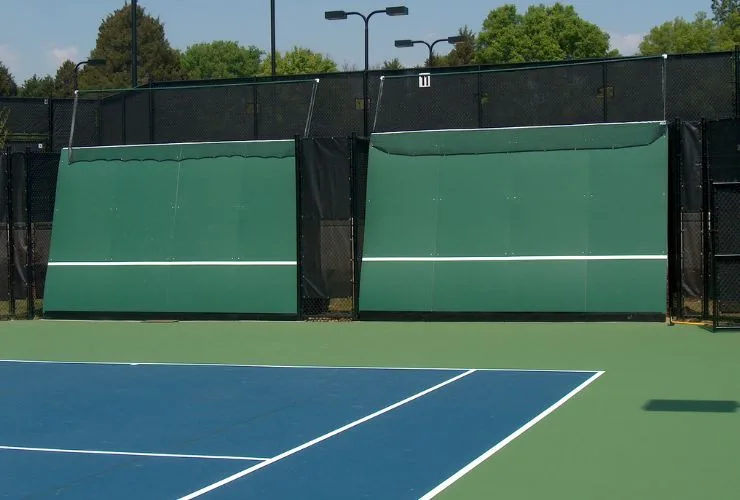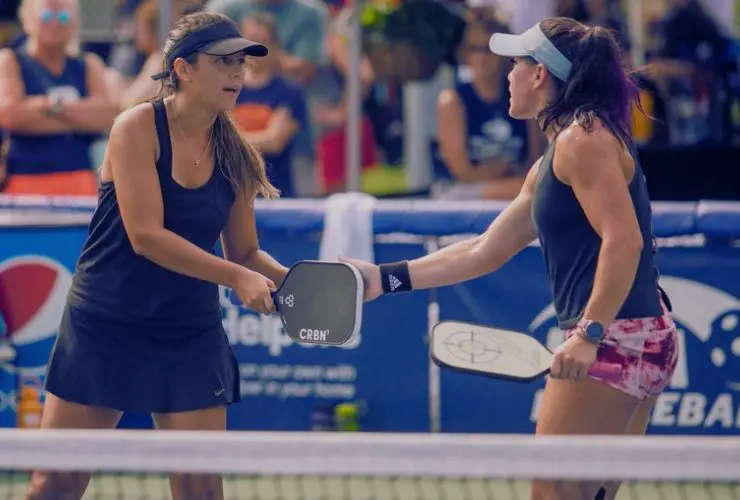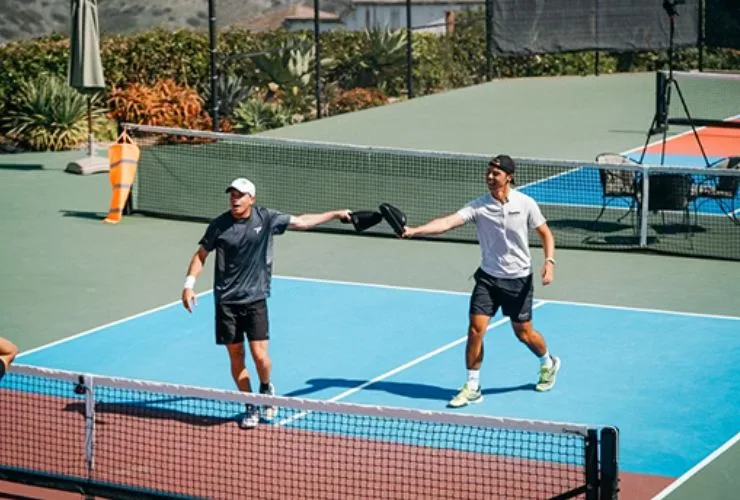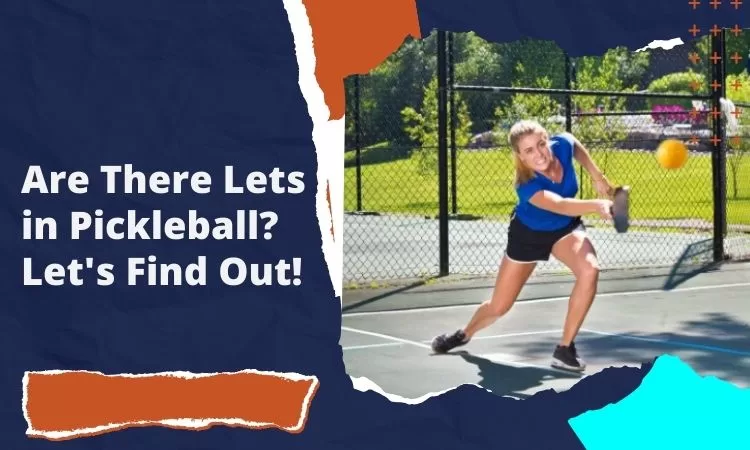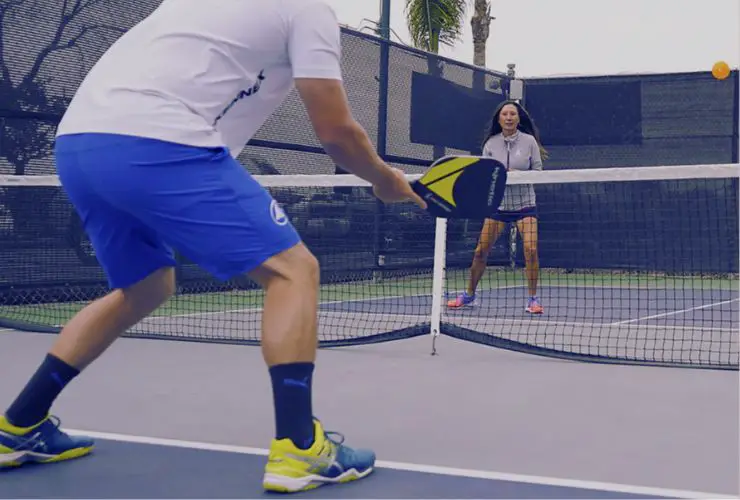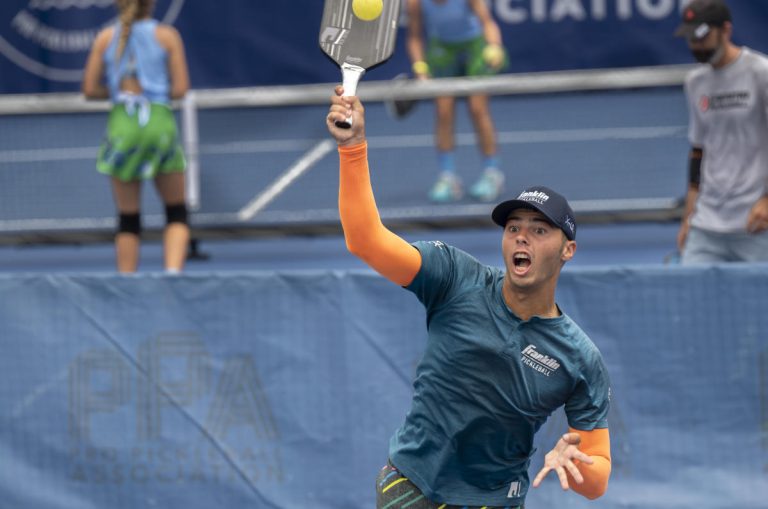Can You Toss The Ball Up When Serving In Pickleball?
Suppose you’re among the millions of people who’ve taken up pickleball game as a popular pastime in recent years. You may have wondered from time to time if it’s permissible to tossing the ball into the air when initiating service.
Although much goes into selecting and mastering the correct form for pickleball serving, finding out whether or not it’s allowed to jump and throw can be confusing for novice players. In this blog post, we will explore everything you need to know about serving techniques in pickleball.
Can You Toss The Ball Up When Serving In Pickleball? No, you cannot throw the ball in pickleball game. When it comes to serving, players are not allowed tossing the ball into play. Instead, they must hit or hit-and-bounce the serve from behind their side of the court across the net and onto their opponent’s side of the pickleball court. The drop the ball shall be done properly. If you drop the ball, making contact with the ball is essential by using the pickleball paddle before ball hits the ground.
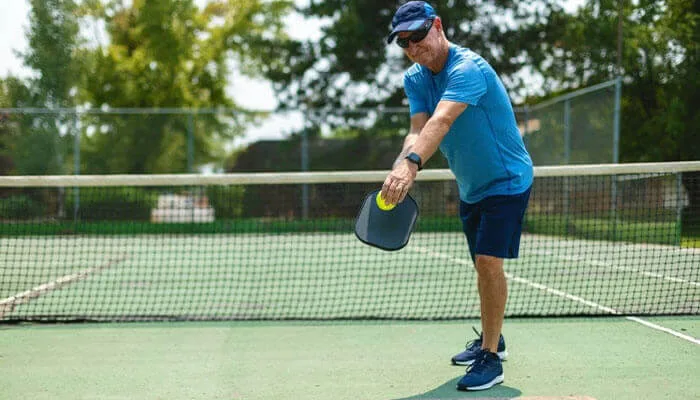
This requirement adds an extra challenge for players as it requires additional precision and accuracy when hitting their serves instead of simply throwing them over the pickleball net as other racket sports allow.
READ More About: Which Pickleball balls are right for you to play?
How to Improve the Pickleball Serve Without Throwing the Ball Up?
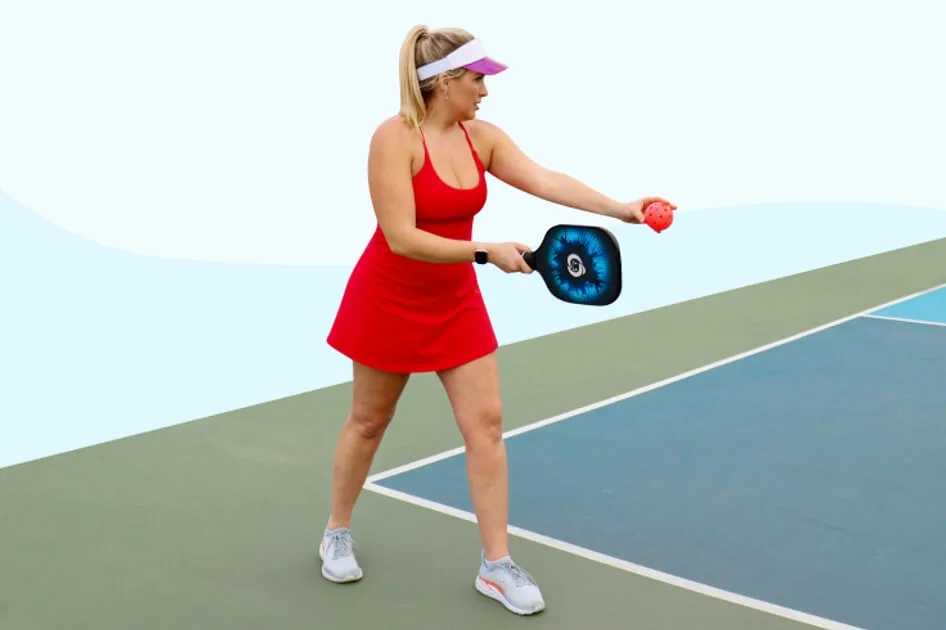
Pickleball serving is an essential skill to master, and it can be difficult to learn without throwing a ball. However, there are several techniques that players can use to improve their serve without having to throw the ball.
Volley Serve routine
This serve is one strikes without permitting the ball bounce before hitting it. The most important thing to remember when developing your serve routine is consistency. Developing a consistent motion will help you create an effective and efficient serving motion that will give you more control over where you hit the ball. There is a 10 seconds window to make contact with the ball once the score is called out. Voley serve considers to allow the hit from the highest possible point, hence, presenting with the best angle.
Additionally, focus on relaxation before and during your service motion, as this will aid in keeping good form throughout the entire process. It is important to remember only one serving try is allowed, in line with ping pong rules vs tennis rules where two tries are permitted.
Three rules for pickleball serving
Positioning
Serving Motion
Placement
Hold and fire
Hold and fire improve one’s pickleball serve without throwing the ball. It is a valuable technique for all players, from beginners to experts, as it allows them to practice their form and improve their accuracy without wasting balls. Using this technique, players can hone their serve motion and develop better control over where they hit the ball on the court.
The first step in hold and fire is finding an open area with enough space to stand while serving. Make sure you are standing far enough away from any walls or other obstacles that might cause you trouble when trying to land your serve correctly. Once you have found a good spot, begin swinging your arm as you normally do when serving the ball.
The Drop Serve
The drop serve requires you to drop the ball from any height (however, no jumping or throwing of the ball permitted). This way, the ball bounces before the serve is taken. It is a legal service for the ball to bounce more than once, and the player can hit the ball in any way they like.
Serving from the back foot
Serving from the back foot is a great way for pickleball players to improve their serve without throwing. This technique allows players to focus on precision and power, improving their overall accuracy and control of the ball in the process. Additionally, serving from the back foot allows one to practice perfecting stroke mechanics and developing a higher level of consistency.
Swinging the whole arm
To improve your serve, you can use some key techniques without throwing the ball. One of these techniques is swinging the whole arm. Swinging the whole arm means using your full range of motion when serving, from your shoulder to your wrist. This allows you to generate extra power behind each serve so that it travels further and faster across the court.
When executing this technique, ensure that both arms are extended fully before releasing the ball. It’s also important to keep a consistent rhythm throughout your swing, as this will help ensure accuracy while still providing enough speed on each serve.
Serving the ball close to the baseline
Serving close to the baseline is one of these techniques for improving your serve. It’s important to understand where the back line lies and how far away from it you should be when taking your position for serving.
This will help ensure you have enough room to move around and execute a successful shot while keeping the ball within bounds. Keeping the ball close to the baseline also allows you to better control its trajectory as it moves across the court, making it easier for your opponent to return it on their own terms.
The service loss by the serving team when the time for the opposite team to serve is called a side out. A side out is a common practice throughout the duration of the game.
Frequently Asked Question
What Is The Hardest Serve In Pickleball?
Spinning serves are one of the most challenging in pickleball game, requiring players to hit the ball with a high amount of spin and accuracy. Pickleball spin serve is achieved by hitting the ball at an angle, causing it to rotate rapidly in the air. Experienced players use this serve to take their opponents off guard and throw them off balance during a game.
Spinning serves are one of the hardest shots for opponents to return when executed correctly. The fast spin makes it difficult for opposing players to anticipate where the ball will go after impact and often leaves them scrambling for a successful return shot.
Players must be aware of their own positioning and that of their opponent when attempting this powerful shot, as even small errors can result in missed points or worse – lost games!
What Is The Fastest Pickleball Serve?
Generally, it’s believed that pickleball serves should travel between 25 mph and 40 mph to be effective. To achieve this speed, players need to use a combination of both arm strength and technique, along with some practice time.
For example, focusing on having an explosive motion during your swing while keeping your arm straight will help you generate more power when serving. Additionally, focusing on hip rotation and keeping your wrist loose can help increase a serve’s speed and accuracy.
Do You Switch Sides After Pickleball Serves?
In pickleball, players on the serving team don’t alternate sides unless a point is scored. This means that if one player serves two balls in a row without either being returned or an error is called, the same person will serve again and will only switch with their partner once a point is scored.
These pickleball serve rules makes it much harder for opponents to anticipate which side of the court will be served next, resulting in more mistakes when returning shots. Knowing this rule is key for any competitive pickleball player looking for success in their games!
What is a “Nasty Nelson”?
A “Nasty Nelson” phrase is named after a famous pickleball player, Tim Nelson, who is famolus for his contentious style of play. Ultimately, it is a shot where the pickleball serving happens to purposely hit the opposing player closest to the pickleball net. In this case, the opposing player can not receive the serve.
Can You Toss The Ball Up When Serving In Pickleball Conclusion
When serving in the game of pickleball, you do not suppose tossing the ball up. It is an important to know the pickleball serving rules.
As such, practicing with a coach or experienced player is recommended before using this technique in competitive play.

